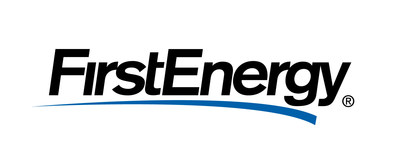FirstEnergy's Pennsylvania Utilities Wrap Up 2020 Projects to Strengthen, Modernize Power System
FirstEnergy Corp. (NYSE: FE) has invested over $120 million in infrastructure projects in Pennsylvania over the past year, aimed at enhancing electric service reliability for two million customers. This investment is part of the $572 million Long Term Infrastructure Improvement Plan (LTIIP II) running from 2020 to 2024. Key upgrades include replacing older power lines, installing automated technology, and improving safety measures. The upgrades have resulted in notable reductions in service interruptions by up to 20 percent in certain areas.
- Investment of over $120 million in infrastructure improvements.
- Reduction of service interruptions by about 9 percent for Met-Ed in 2020.
- Automated technology improved service restoration times by 45 percent since 2015.
- None.
GREENSBURG, Pa., Jan. 26, 2021 /PRNewswire/ -- FirstEnergy Corp.'s (NYSE: FE) Pennsylvania utilities completed more than
Known as FirstEnergy's Long Term Infrastructure Improvement Plan (LTIIP II), the
"Our Pennsylvania utilities remain committed to updating and modernizing the infrastructure, technology and equipment used to provide safe, dependable electric service to customers for many years to come," said Scott Wyman, president of FirstEnergy's Pennsylvania Operations. "We identify and undertake projects that strengthen a vast distribution network exposed to severe weather, time, tree contacts, vehicle accidents and other hazards."
Through LTIIP, customers benefit from new automated reclosing devices that will help limit the frequency, duration and scope of service interruptions. The electrical devices work like a circuit breaker in a home that shuts off power when trouble occurs, with the added benefit of automatically reenergizing a power line within seconds for certain types of outages to keep power safely flowing to customers.
These devices allow utility personnel to automatically restore service to a portion of the customers affected prior to sending a crew to investigate and manually reset equipment, which is especially helpful in rural or hard-to-access areas. This automated technology is safer and more efficient. To determine the best locations for these devices, reliability engineers reviewed outage patterns across their respective service territories and identified areas that would benefit from an automated reclosing device.
Other projects include replacing hundreds of miles of existing power lines with thicker, durable wire designed to withstand tree debris and severe weather. New utility poles were installed to support the electrical infrastructure and additional power lines were constructed to connect customers to an alternate circuit, allowing for more flexibility in restoring outages due to events such as storms or vehicle accidents. Such ties offer a backup power feed that will help keep the lights on for customers if wires or equipment on their regular line are damaged or need to be taken out of service.
In addition to electrical line upgrades, new fencing was installed in some substations to help deter climbing animals and protect against electrical equipment interference that can cause power outages. The interior fencing encircles sensitive equipment, keeping animals out of harm's way and electricity safely flowing to customers.
These targeted investments to the electric distribution system are making a positive difference:
- Met-Ed's projects have reduced the frequency of service interruptions from line and equipment failure by about 9 percent in 2020 compared to 2019.
- Penelec's automated technology coupled with well-trained control center dispatchers allowed power to be restored in five minutes or less to 45 percent more customers in 2019 compared to 2015.
- Penn Power's projects have reduced the frequency of service interruptions by 20 percent for customers in areas where work has been completed since 2016.
- West Penn Power's projects have reduced service interruptions from line and equipment failure by about 10 percent per year from 2018 to 2020.
Penn Power serves approximately 165,000 customers within 1,100 square miles of western Pennsylvania. Follow Penn Power on Twitter @Penn_Power, and on Facebook at www.facebook.com/PennPower.
West Penn Power serves approximately 725,000 customers within 10,400 square miles of central and southwestern Pennsylvania. Follow West Penn Power on Twitter @W_Penn_Power and on Facebook at www.facebook.com/WestPennPower.
Penelec serves approximately 585,000 customers within 17,600 square miles of northern and central Pennsylvania. Follow Penelec on Twitter @Penelec and on Facebook at www.facebook.com/PenelecElectric.
Met-Ed serves approximately 570,000 customers within 3,300 square miles of eastern and southeastern Pennsylvania. Follow Met-Ed on Twitter @Met_Ed and on Facebook at www.facebook.com/MetEdElectric.
FirstEnergy is dedicated to safety, reliability and operational excellence. Its 10 electric distribution companies form one of the nation's largest investor-owned electric systems, serving customers in Ohio, Pennsylvania, New Jersey, West Virginia, Maryland and New York. The company's transmission subsidiaries operate approximately 24,500 miles of transmission lines that connect the Midwest and Mid-Atlantic regions. Visit FirstEnergy online at www.firstenergycorp.com and follow FirstEnergy on Twitter @FirstEnergyCorp.
Editor's Note: Photos of workers conducting inspections to enhance service reliability for FirstEnergy customers are available for download on Flickr.
![]() View original content to download multimedia:http://www.prnewswire.com/news-releases/firstenergys-pennsylvania-utilities-wrap-up-2020-projects-to-strengthen-modernize-power-system-301215245.html
View original content to download multimedia:http://www.prnewswire.com/news-releases/firstenergys-pennsylvania-utilities-wrap-up-2020-projects-to-strengthen-modernize-power-system-301215245.html
SOURCE FirstEnergy Corp.








